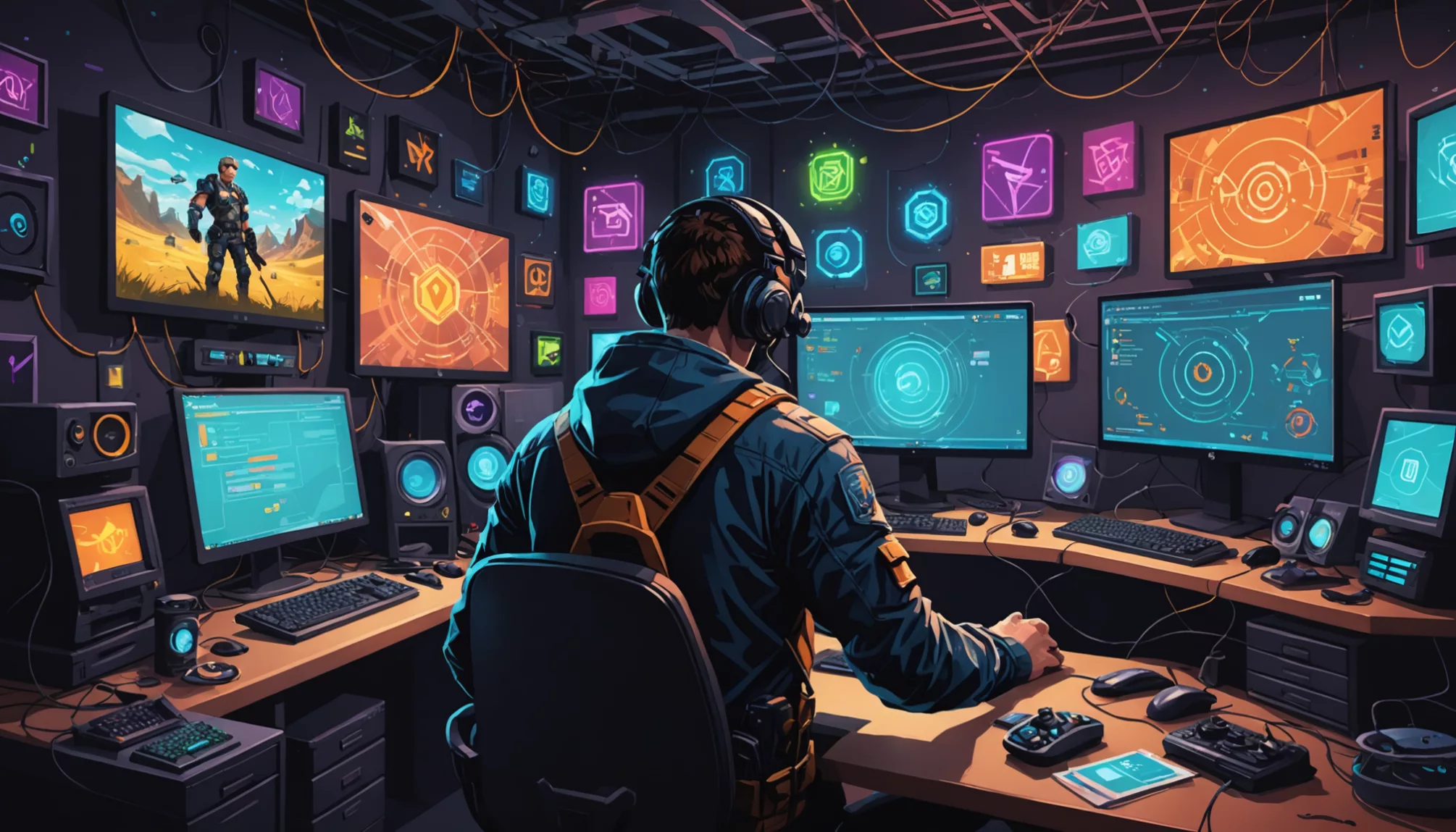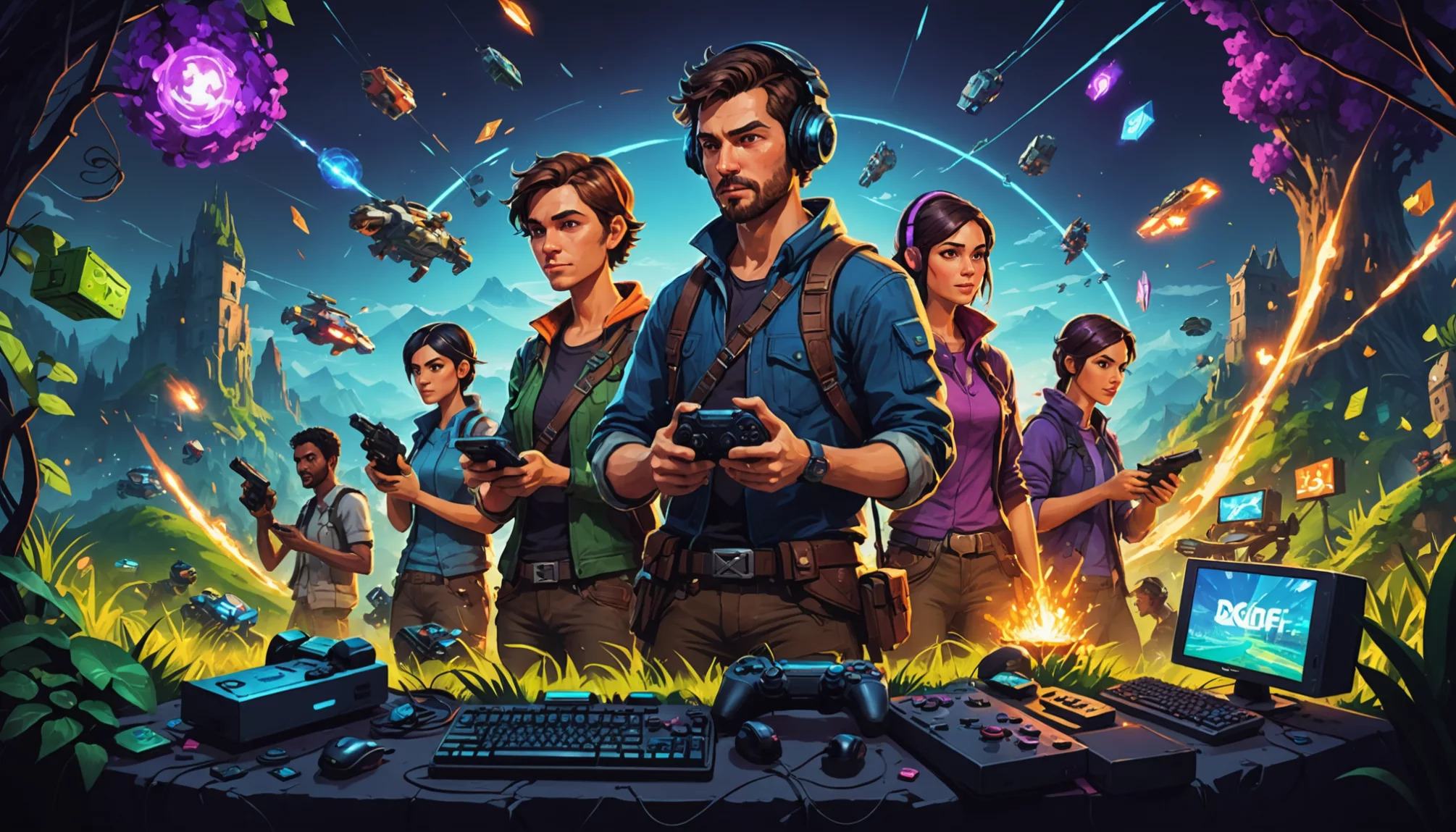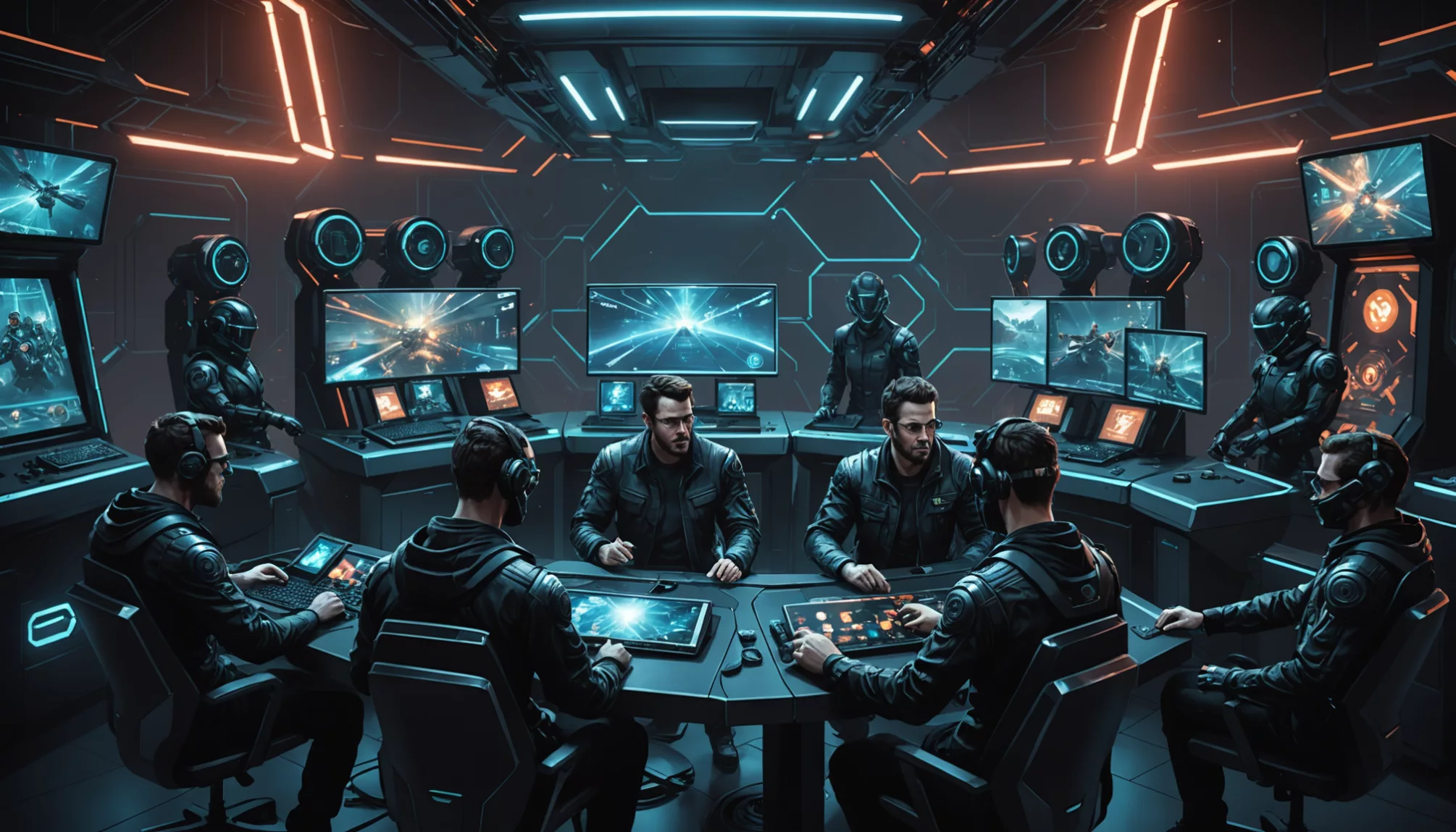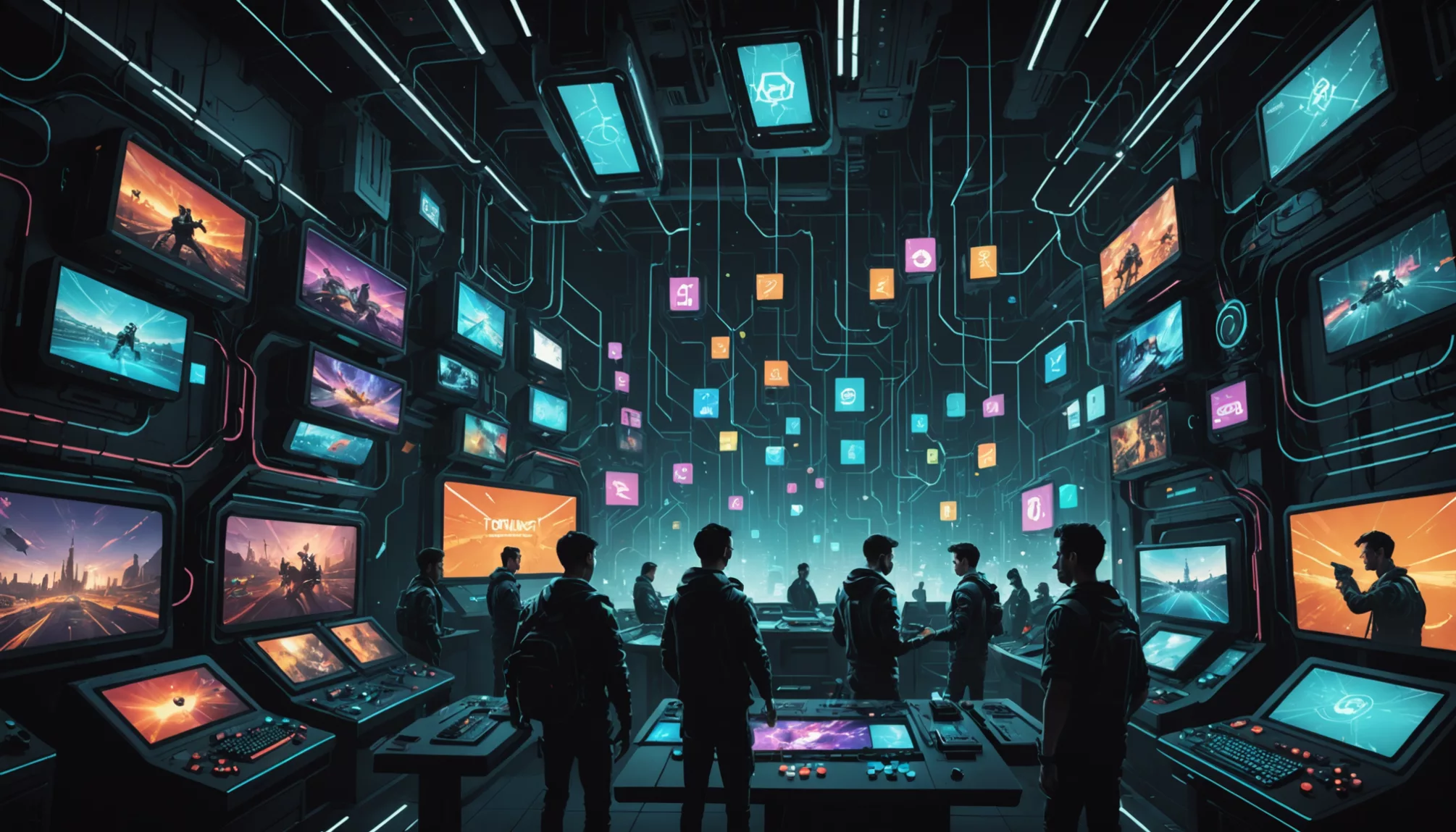When you dive into the digital world of gaming, have you ever wondered what keeps your favorite games secure? That’s where DRM in gaming comes into play! Digital Rights Management (DRM) protects games from piracy but can also create some interesting challenges for players. Understanding how DRM works is crucial because it impacts everything from game installation to whether you can play offline. If gamers don’t grasp these concepts, they might face frustrating restrictions that could ruin their gaming experience.
In this article, we’ll explore what DRM really is and how it affects your gameplay. You’ll learn about the different types of DRM systems, discover how these systems can hinder or enhance your gaming, and uncover exciting DRM-free alternatives like GOG. Plus, we’ll peek into the future of DRM in the gaming industry. So, grab your controller and get ready to unlock the secrets behind DRM!
What is DRM in Video Games and How Does it Work?

Understanding Digital Rights Management and Its Purpose for Game Developers
DRM stands for Digital Rights Management. It is a set of tools that protects game files and prevents unauthorized copying. Game publishers use DRM to ensure that each copy of a game is legitimate and to protect their intellectual property. This system also helps secure revenue by preventing casual piracy.
Different Types of DRM Systems Used in the Gaming Industry
DRM systems vary in their methods of verification and protection:
- Online Activation: Requires a one-time internet check to verify the purchase.
- Always-On DRM: Needs a constant internet connection, which can impact offline play.
- Hardware-Based DRM: Ties the game to specific hardware, limiting transfers between devices.
| DRM Type | Activation Method | Key Impact |
|---|---|---|
| Online Activation | One-time check | Minimal offline issues |
| Always-On DRM | Constant check | Can cause issues with offline play |
| Hardware-Based DRM | Tied to hardware | Limits game transferability |
References:
How DRM Can Affect Player Experience and Game Accessibility

Connection Requirements and Their Impact on Single-Player Video Game Enjoyment
Many DRM systems require a constant internet connection. If the server goes down, single-player games may become unplayable, leading to frustration for players who expect uninterrupted access. Additionally, this can prevent gamers from accessing their favorite titles during outages or maintenance periods, further diminishing the overall gaming experience. (Scoredetect)
Performance Issues and Technical Concerns Related to DRM Implementation
DRM software can slow down loading times and lead to crashes. Extra checks or added code may delay gameplay, especially on older hardware, affecting the overall gaming experience. Furthermore, these performance issues can discourage players from fully engaging with a game, as interruptions can detract from immersion and enjoyment. (Walledculture)
How DRM Restrictions Influence Game Preservation and Longevity
Many players advocate for a more balanced approach to DRM in gaming that respects player freedom. DRM can limit access to older games when servers shut down. This situation raises concerns about preserving digital titles for future generations, as players may lose access to games they purchased. As a result, valuable cultural artifacts in gaming may become inaccessible, impacting historical appreciation of the medium. (GOG)
For many gamers, the implications of DRM in gaming are felt long before they even hit play.
DRM-Free Alternatives: The GOG Approach and Other Platforms

How GOG Built a Business Model Around DRM-Free Gaming
GOG (Good Old Games) offers a catalog of DRM-free titles. Players can download and install games without needing an active internet connection, allowing complete ownership and easy reinstallation. This model not only promotes user satisfaction but also encourages a sense of trust between gamers and developers.
Comparing DRM and DRM-Free Distribution Models for Consumers
| Feature | DRM | DRM-Free |
|---|---|---|
| Internet Connection Requirement | Requires constant checks | No constant connection needed |
| Copy and Backup | Restricted copying | Free copying allowed |
| Impact on Performance | May slow loading times | Generally quicker |
| Game Preservation | Risk if servers shut down | Full ownership maintained |
How DRM Decisions Affect Indie Developer Success

Cost-Benefit Analysis of DRM Implementation for Indie Game Creators
Indie developers often weigh the costs of implementing DRM against its potential benefits. High expenses and technical integration may lead some studios to opt for a DRM-free model, which simplifies installation and enhances user satisfaction. By focusing on customer goodwill, indie developers can create a loyal fan base that supports their future projects. As debates continue, the future of DRM in gaming will undoubtedly shape player experiences.
Balancing Piracy Concerns Against Potential Customer Goodwill
While DRM can help prevent piracy, overly strict measures may frustrate customers. Indie developers must find a balance that protects their work while ensuring a positive gaming experience for players. Striking this balance can lead to increased sales, as customers appreciate a more accessible gaming experience. Many players are turned off by excessive restrictions that hinder their ability to enjoy a game fully, leading them to seek out alternative means of access, including pirate streaming sites for TV shows. Developers should consider implementing reasonable security measures that enable fair usage while still deterring potential piracy. By fostering a more customer-friendly approach, indie creators can cultivate loyalty and encourage word-of-mouth promotion, ultimately increasing their reach in a competitive market.
The Future of DRM in the Gaming Industry

Evolving Business Models and Their Impact on Digital Rights Management
The gaming industry is moving towards subscription services and cloud gaming models that require less stringent DRM. These changes aim to enhance user experience while still protecting intellectual property. As consumer preferences shift, developers may need to adapt their strategies to remain competitive.
Conversations about DRM in gaming are more relevant today than ever before. Players are increasingly advocating for transparency in DRM in gaming practices.
How Consumer Advocacy is Shaping DRM Policies Among Major Publishers
Consumer feedback is increasingly influencing DRM practices. Many players are calling for fewer restrictions and more flexibility in how games are accessed and installed. This push for change reflects a growing demand for player rights and ownership in an increasingly digital gaming landscape.
Predictions from Industry Experts on the Future of Video Game Protection Measures
Ultimately, player insights into DRM in gaming reflect a desire for rights and respect in the industry. Experts predict that future DRM systems will focus on minimizing performance issues while maintaining strong protection against piracy. Innovations may include less invasive checks that allow for smoother gameplay. As technology evolves, the industry will likely adopt more user-friendly solutions that enhance both security and enjoyment.
Consumer Insights: Players’ Views on DRM
Player feedback reveals mixed feelings about DRM in gaming. While some appreciate the security it provides, many prefer games without restrictive measures. Common points include:
- Frustration with constant internet requirements
- Preference for smoother installation processes without extra verification
Conclusion
DRM in gaming serves to protect intellectual property and prevent unauthorized copying. However, it can also lead to performance issues and restrict access to older games. The emergence of DRM-free platforms like GOG highlights a growing desire for greater player freedom. As the gaming industry evolves, balancing protection with user satisfaction will remain crucial.
FAQs
1. What does DRM stand for in gaming?
DRM stands for Digital Rights Management, which protects game files from unauthorized copying.
2. How does DRM affect single-player games?
Some DRM systems require an active internet connection, which can block access if the connection fails.
3. What are the benefits of DRM-free games?
DRM-free games allow complete ownership, easier installation on multiple devices, and fewer restrictions.
4. Can DRM cause performance issues?
Yes, it can lead to longer loading times and crashes due to extra verification processes.
5. How are new business models influencing DRM practices?
Subscription services encourage developers to adopt less invasive DRM that enhances gameplay while securing game files.

